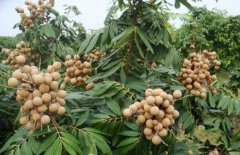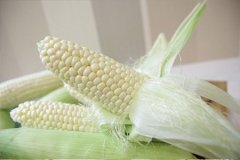Where does the orange tree come from? What is the difference between bitter orange and sweet orange? characteristics of navel orange and blood orange
The orange tree was originally grown in China and was planted in Asia for more than 4000 years. Later, it was introduced to Persia, Egypt, Spain and North Africa by Arabs. In fact, orange was transformed by Arabs from Sanskrit nagarunga narandj. Oranges are now one of the most important commercial fruits in the world. Oranges are mostly classified into bitter oranges and sweet oranges, but there are more classifications because of their different varieties. Have you ever eaten Jinxiang orange, a new citrus variety, Tainong No. 1?
Bitter orange (bitter orange), also known as bergamot, is considered to be the ancestor of sweet orange. Bergamot is like the finger of Buddha as its name implies. Bergamot, also known as flower orange, is an ancient citrus variety, native to India and cultivated in southern China, mostly used as an ornamental or medicine. Bergamot, an evergreen shrub, has prickly branches and white flowers. After the fruit is ripe, the stigma is often deformed into fingers. The front end of the fruit is also cracked like the palm of the hand, the appearance is bright yellow, very beautiful, and the fresh fruit has a mellow and rich aroma.
Sweet orange (sweet orange) is an evergreen tree. The crown is round, the branches and leaves are dense, there are often thorns on the new branches, the leaves are ovate or long ovate in shape, feel leathery, the surface is dark green and the back is light green, the petiole is long, and the flowers are clustered in leaf axils or branches; the flowers are white racemes, full of fragrance, bloom in March, and the petals roll back when they bloom. The shape of the fruit is mostly spherical, but also oblong or oblate, with orange skin and pulp, about 10 petals, soft and juicy, sweet and fragrant.
Valenciva orange (Valencia orange) is native to the island of Azov in Portugal, mainly produced in the United States, Spain and other countries. Valencia orange is also known as Xiangding in Taiwan. Its shape and skin color are similar to those of willow, but its sweetness, acidity and aroma are stronger than those of willow or other citrus. At present, it grows all over the world, including South America, South Africa and Australia.
Navel orange (navel orange) is a crop of Rutaceae. Navel orange is called navel orange because there is an obvious by-fruit protruding conical like navel in the fruit. Its origin in Brazil is currently cultivated in Spain, Israel, Australia, South America and South Africa. Navel orange can be said to be the best and most difficult variety of sweet oranges in the world, and its unit price is the highest among oranges. Navel oranges are very popular because of their large fruit shape, thin flesh and easy peeling and no seeds.
Blood orange (blood orange) is a mixed plant, which first appeared in Europe in 1850. Fresh blood orange is red or orange, with bright red stripes, and sweet and juicy with a fragrant aroma. Several varieties are slightly oval. Blood orange is mostly seedless and is mainly grown in Spain, Italy and North America.
Oranges often have some aliases with trademarks, such as Sunkist, Jaffa. Outspan is a large-scale agricultural company in California, USA, under the name of Sunkist, a popular orange juice drink, it has since become synonymous with American willow, Jaffa Yaffa orange, Israeli orange is a large citrus produced in Israel Outspan is a trademark of a South African agricultural company, these trademarks actually include several different oranges And they all meet the quality specifications established by some organizations. at present, the largest orange producers in the world are Brazil, North America, China, Spain and Mexico. 14% of the oranges in the world are from Florida in the United States.
Nutritive composition
Liu orange has high nutritional value, and its composition varies according to variety, but generally speaking, water content is about 60%, protein 0.6%, inorganic salt 0.4%, fiber 0.2%, sugar 6%, as well as minerals and vitamins. Every 100g of willow, about 46 calories, trace vitamin A, vitamin B1 0.07mg, vitamin B2 0.04mg, vitamin C 60mg.

- Prev

The origin of longan: what are the main producing areas of longan cultivation in Taiwan? Classification of maturity of longan varieties
Longan belongs to the disease-free family and is a subtropical evergreen fruit tree. it is native to Chinese mainland and has a long history of cultivation in Taiwan. It is recorded in the Zhuluo County Chronicles of the 55 years of Emperor Kangxi of the Qing Dynasty. Longan was brought for cultivation when people from Fujian and Guangdong emigrated to Taiwan. Longan cultivated in Taiwan, although introduced from China.
- Next

Is corn corn? What are the characteristics of corn variety Hokkaido white corn? is it sweet?
Corn should be planted well, and more attention must be paid to the planting methods and matters needing attention. White corn in Hokkaido is one of the Japanese agricultural products expected by Hong Kong diners every year! However, it is usually not built until autumn. During this gap period, you can try white corn produced in Taiwan.
Related
- The first cup of black tea in spring, the flavor and history of tea gardens in Kenya, Africa
- The computer can not only choose potatoes, but also grow tea rice. AI will grow winter oolong tea champion.
- It is not only the inflated tea bitten by insects, but also engraved with the four seasons tea in Beipu.
- The Oriental Beauty Tea Festival in Zhuxian County takes the stage at the weekend to experience the plus-size feast of oil tea.
- & quot; Oriental Beauty Tea & Exploration of Emei in Hsinchu, the hometown of quot;
- The new variety of strawberry "Tainong 1" dessert is the first choice with mellow aroma. Crimson gorgeous
- History of Tea in Taiwan: from Wild Inner Mountain to Export Tea Garden
- Two types of Taiwan Oriental Beauty Black Tea won the British three-Star Award for Childhood Tea Xiang Zhang Jiaqi changed from pilot to champion tea maker.
- Banana species and varieties: the planting history of Taiwan Xianren banana and dwarf banana is long, is banana disease resistant?
- Coffee planting Technology: Qianjie Coffee from Seedling to harvesting

